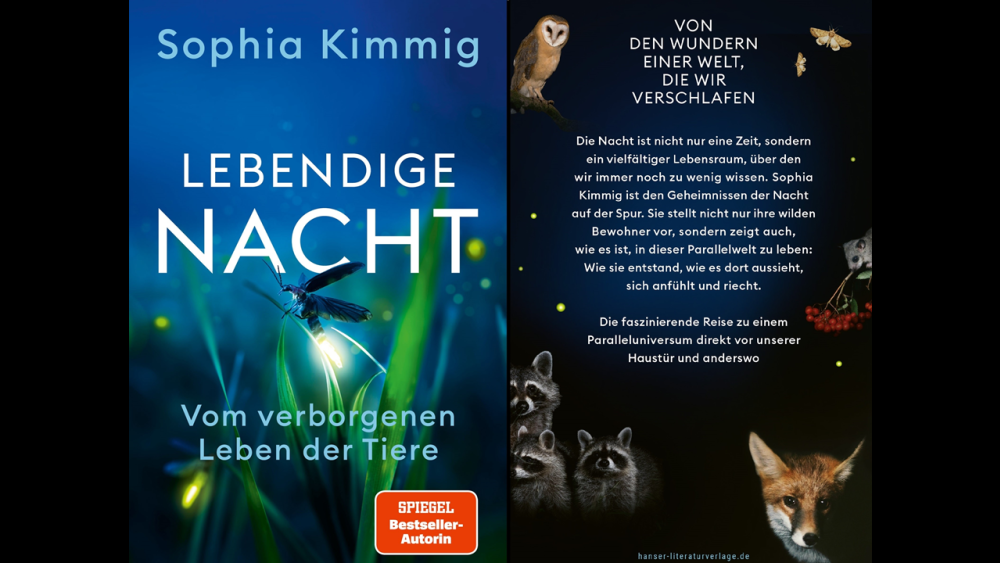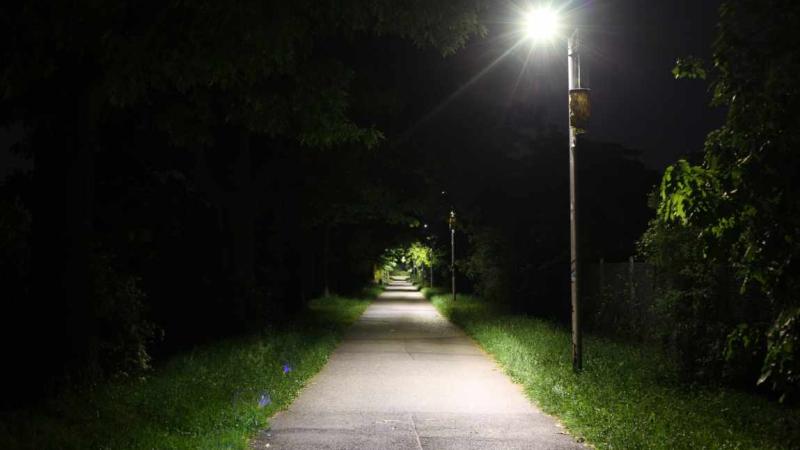
The new book by Dr Sophia Kimmig. | Book cover: Hanser Literaturverlage
The night is not only a time, but also a diverse habitat about which we still know far too little. The IGB research group "Light Pollution and Ecophysiology" investigates the ecological consequences of the increasing illumination of nocturnal landscapes. In this book, Sophia Kimmig explores the secrets of the night. She not only introduces its wild inhabitants, but also shows what it is like to live in this parallel world: how it came to be, how it looks, feels and smells like.
Dear Sophia Kimmig, which wild night-dweller would you like to meet one day?
So many that it's hard to choose just one. But to meet a lynx, for example, would be a dream come true. Lynx are so shy and so good at hiding that they are difficult to spot in the wild. But their beautiful brush ears are so distinctive.
Most of us could probably name three butterflies, but it's harder with moths. Why do we know so much less about nocturnal animals than we do about diurnal ones?
We are diurnal creatures and use our eyes primarily to make sense of the world around us. The dark nocturnal world therefore eludes our everyday perception. Things that we only notice at second or third glance often hide secrets that we had no idea about at first glance.
What do dinosaurs have to do with the nocturnal activity of many mammals?
During the evolutionary history of mammals, dinosaurs were so successful and diverse in their various daytime habitats that night may have been the only way for them to evolve in their shadow. Then, as the age of the dinosaurs ended abruptly, the triumphal march of mammals out of the night began.
The night is not just a time, but a whole habitat, we learn in the book. What does this mean?
The world of the night is not simply darker than the world of the day. It has different environmental conditions, its own rules and laws. In order to survive in it, its creatures have changed and adapted to it, having, for example, sharper senses or unknown senses that we cannot even imagine.
How has working with nocturnal animals changed your own life?
It has given me a new perspective on our world and made me realise how small the slice of what we think of as our environment is. The many hours I have spent in the city at night, in dark cemeteries, in forests and fields have also given me excitement, joy, adventure, but also relaxation and peace.
The questions and answers with Sophia Kimmig were compiled by Hanser Literaturverlage.





